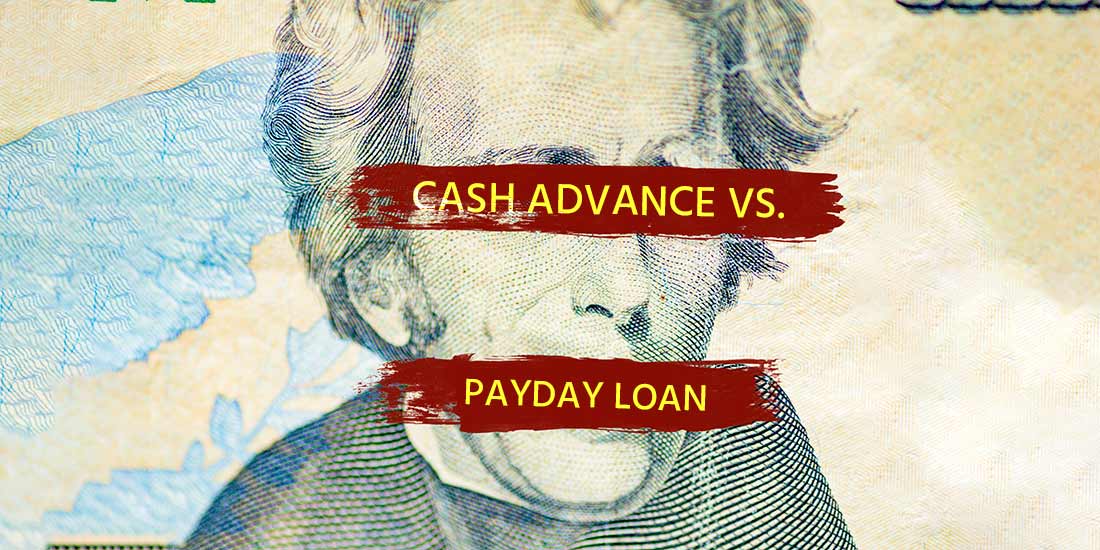
What's the Difference Between Cash Advance and Payday Loan Options?
5 Min Read
A payday loan and a cash advance are fast and easy-to-get loans that can be used toward unexpected financial emergencies. This is where the common ground between them ends. Although both of them provide short-term financial relief, they have several key distinctions that borrowers should understand before applying. Let’s explore the difference between a cash advance and a payday loan to help you make an informed decision about which one is right for you.
What Are Cash Advances?
A credit card cash advance is a loan type that allows you to get money against your credit card limit. This type of loan is different from a regular credit card purchase. While regular purchases often come with an interest-free grace period, credit card cash advances start accruing interest immediately. Thus, a credit card cash advance typically comes with a higher overall cost.
Additionally, a cash advance often has extra fees in the form of a percentage of the amount you borrow. The maximum sum you can withdraw is limited. Your credit card issuer sets a borrowing limit depending on your income and the type of card you use.
What Are Payday Loans?
Payday loans are a type of short-term, high-interest loan that is designed to help people bridge the gap between paychecks. Payday loans are typically marketed as a quick and easy solution to financial problems. However, they can be expensive in the long run.
A payday loan cost is usually expressed in a flat fee, not a percentage of a loan amount. These loans are unsecured and don’t require any pledge. Also, payday loans are known for their fast funding and relaxed eligibility criteria. You can get one within one business day, even with a less-than-ideal credit score.
A payday loan typically has strict repayment terms. You need to pay it off in one payment within 2 to 4 weeks. The due date is commonly set by your next paycheck. As loan terms are short, the maximum loan amount is usually limited to $1,000.
How Do Cash Advances and Payday Loans Work?
A cash advance works like a regular money withdrawal from your credit card balance. Thus, you need to have a credit card to access the money. To request a cash advance, you need to:
- Visit a nearby ATM or a physical bank store.
- Take your credit card down to the ATM and withdraw money after entering your PIN.
- If you don’t have a PIN, visit a branch with your credit card and proof of identity.
Some credit card issuers also allow customers to access credit card cash advances through their websites or customer service hotlines. This way, the money will be transferred to your bank account. Whatever the option you choose, a cash advance is considered almost lightning-fast.
A typical payday loan usually takes a little more time to get. However, it’s also an emergency type of borrowing that can be obtained within one business day. To get a payday loan, you need to:
- Fill out a loan application form. Nowadays, most payday lenders offer online applications through their websites.
- Wait for a response. The payday lender will make a soft credit history check and notify you via email within several minutes.
- Read and sign a loan agreement. If the lender approves you, review your loan document and put an e-signature in.
- Receive the borrowed fund in your checking account.
When the loan period ends, you need to ensure you have enough money in your account to repay it. The lender will deduct money from your balance automatically.
Cash Advance vs. Payday Loan
Both payday loans and cash advances can be used to overcome financial emergencies due to their speed and availability. However, they are pretty different.
The first distinction lies in their repayment terms. A cash advance can be repaid either in one go or by making minimum monthly payments. You can carry out your cash advance balance into the next statement period. But keep in mind that interest will accumulate. Also, some lenders may take a portion of your monthly payment toward the lowest annual percentage rate. Thus, you should keep track of where your payments are going.
On the contrary, a payday loan must be repaid all at once on the agreed-upon date. The whole sum you pay will go toward your credit balance. The repayment is usually digitized.
Another difference is the way you can borrow money. To get a cash advance, you need to already have a valid credit card and visit an ATM or a bank store with it. A payday loan requires you to go through an application process first. Although it’s typically very fast and simple, it can affect the speed of obtaining the loan.
Finally, these loans have different costs. Thus, the average interest rate on a cash advance is nearly 25% APR. At the same time, a payday loan cost is usually set in a flat lender fee. It can be from $10 to $30 per each $100 borrowed. To compare costs, we need to convert these fees to an annual percentage rate. This way, a 14-day payday loan can come with an APR between 270% and 782%.
How to Understand Which Loan Is Right for Me?
It’s always a personal choice. But whatever the option you’ll pick, it’s important to have a repayment plan and make sure you can afford the amount you owe.
Cash advances can be faster if you have an ATM or a bank or credit union store nearby. They can also be cheaper if you repay them within several weeks and avoid interest accumulation.
Payday loans can be a great solution for people who need fast cash and don’t have credit cards. However, they can be more expensive in the long run. Also, payday lending can be prohibited in some states due to the associated risks. Thus, make sure to check out your state law regulation before deciding on a loan type.
Alternative Ways to Borrow Money
Borrowing money goes beyond these two options. If payday loan debt seems too expensive to you and you don’t have a credit card to request a cash advance, here are some alternatives to consider.
Cash Advance Apps
A cash advance app allows you to borrow money via your smartphone in a few taps. Some loans offered by cash apps have lower interest rates compared to payday loans.
Payday Alternative Loans
If you’re a credit union member, you can contact your loan officer and ask about short-term loan options it has. Many credit unions may offer reasonable alternatives to payday loans with lower interest rates.
Borrowing from Family
You can always turn to your family or friends and borrow money from them. Just make sure to repay the money as agreed to maintain a good relationship.
Apply Now For a Loan To Bridge The Gap Until Your Next Paycheck!Apply



